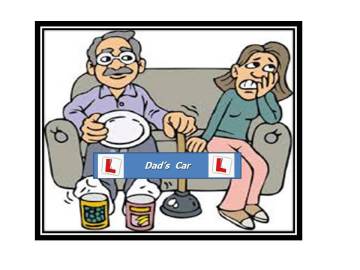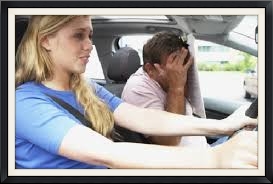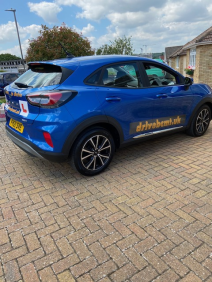
Drivebcmt.uk guide
Learning to drive with Parents
Parents or partners who are able to provide the opportunity for private practice are a massive help, both to us as instructors and for those learning to drive.
The closer you can replicate what we would do in lessons as professional instructors.
The more likely that success will be achieved.
First things first.
Before going out with a learner driver, you must make sure that you meet the minimum licence requirements.
You are over 21 years of age. Plus have held a full driving licence ( for the type of vehicle that you are using ) for the minimumof three years.
Plus that the vehicle is insured and that the learner driver is covered.
You must also remember that you are not just a passenger, but a supervisor with a legal responsibility to your driver and other road users.
Route Planning.
Route planning is VITAL in the early stages of learning and if these are poorly planned then it will lead to the learner making mistakes and becoming frustrated.
This often leads to arguments with the person you are teaching and possibly other drivers.
Inappropriate routes will often lead to lack of motivation and will cause learning to be slow.
One step at a time.
If you find your learner is stalling quite a lot when emerging from junctions or in traffic, the likely cause is insufficient practice in quiter areas with less pressure. Busy traffic is best avoided, such as school times and rush hour until confidence is gained.
You may think that its good motivation to cover as much as possible in the early stages. but this will lead to severe problems later in their training.
Make sure the basic skills and foundations are in place and success will follow.
Check with your driving instructor that your planned route will be suitable.
Talking Sence
The choice of words will have a big impact on the way your learner responds. Try to be precise with your instructions, such as slow down - tell them how much to slow down and what speed you are looking for 20mph for example. To close to the car in front - tell them to keep 3 car lengths so they have something to measure.
You must bear in mind that actions that you take for granted can be quite difficult for a leaner to understand and if you become short tempered and snappy this will make them feel bad and unmotivated.
When mistakes have been made instead of telling them what they did wrong, tell them what they need to do next time to get it right.
When success is achieved tell them how good they were and this will help with confidence and quicker learning.
To Fast
When people are learning to drive they generally try to do everything to fast. I am not talking about general speeding but allowing time to get things correct.
Emerging at junctions are a good example, certainly to begin with the approach speed has got to be no more than
an old persons walking pace. It is much better to do it slow and succeed than to rush and make mistakes.
As confidence and knowledge improves then a progression to a more suitable speed can be introduced.
As a supervising driver you must be familiar with the basic
MIRROR, SIGNAL, MANOUVRE process including
POSITION, SPEED and GEAR, LOOK.
This process is funamental to driving and if not followed could cause more harm than good.
As instructors we can spend more time sorting out what mum or dad has done and this can lead to extra time and money. (Hence the reason for the guide).
Finally, you have to accept that your learner will not respond as quickly as you might think to some situations and you will need patients in abundance.










